The Kuala Kubu Bharu by-election is over. As the dust settled, many have offered their interpretations of the results, with both sides claiming gains among different communities.
I argue that the outcome is a Cadmean victory, damaging both sides.
Drawing from a detailed analysis of the polling station results using multiple social identity lenses (ethnicity, age and class) to estimate voting and fieldwork, this piece both confirms and challenges reported interpretations to date.
The findings suggest that while the overall result was the status quo, with DAP/Pakatan Harapan retaining the seat, Kuala Kubu Baharu’s voting patterns point to worrying trends.
Across both coalitions, Harapan and Perikatan Nasional deficits in support continued, as ethnic political polarisation deepened. Fewer voters came out/back to vote, especially younger voters, pointing to less enthusiasm for all of the electoral alternatives.
Harapan secured its win primarily due to its better machinery and incumbent advantage. This was a luxury that was possible during a by-election when resources and party personnel were concentrated.
With overdue promises of development in a neglected constituency and intensive campaign engagement, Harapan made gains among voters in the lowest socio-economic bracket, especially among Indian estate workers and in Orang Asli communities, among those most in need of government support.
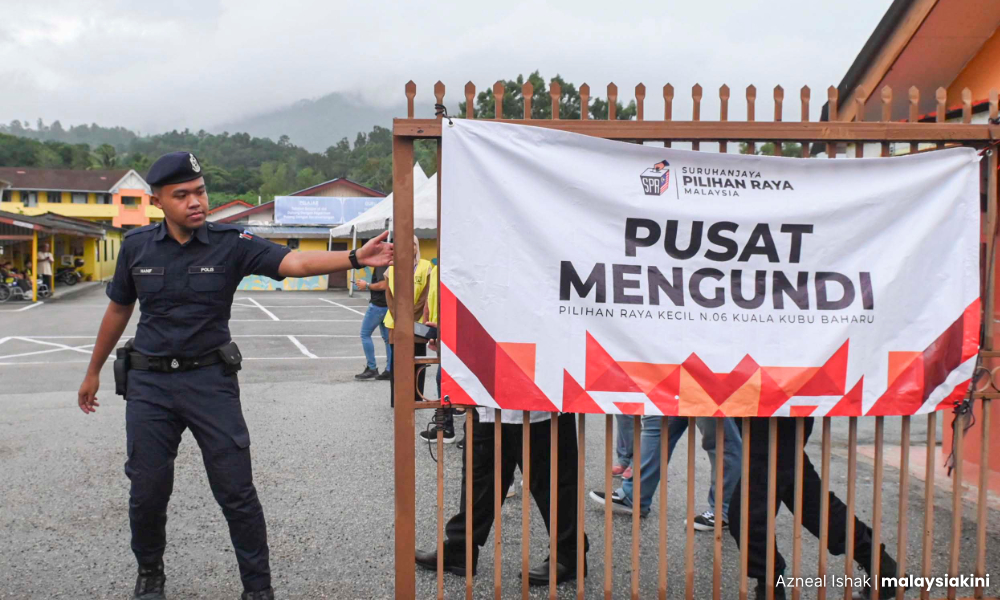
In assessing the Kuala Kubu Baharu results, it is important to look holistically at both turnout and support patterns and remember that in the Selangor state election of 2023, the independent candidate and Muda performed better than the independents of the recent by-election.
Some of the by-election gains by either coalition are the result of a weaker alternative option outside of the two main coalitions.
Turnout: Less voter engagement
Overall turnout in Kuala Kubu Baharu dropped from 69 percent to 61.5 percent, a drop of 7.5 percent. That voter turnout reached this low should be of concern, as it is now the new normal for lower voter engagement.
Speaking of broadly increased voter disengagement, the drop was across all ethnic communities and age cohorts.
The decline in turnout was especially concentrated among Malays and Orang Asli (where the larger percentage should be treated with caution as the numbers of Orang Asli in Kuala Kubu Baharu are comparatively fewer than other groups) and among younger voters.
While the estimated drop of 13 percent was highest among those under 30, a significant turnout drop extended to those in their 40s.
This voting pattern is not an endorsement of any of the political parties, as voters did not come out or return home to vote.
A close look at historical patterns of voting from 2013 in the constituency shows that disproportionately many areas where Umno/BN had strong support in the past are areas where the turnout decline was especially concentrated.
DAP’s decision to appeal to the Chinese by fielding a Chinese candidate and intensive campaigning in this community led to comparatively less turnout decline.
The boycott campaign among Indians did not yield any meaningful results as shown in only a modest drop in turnout of an estimated four percent. There were also fewer spoilt votes in the by-election compared to 2023 state polls.
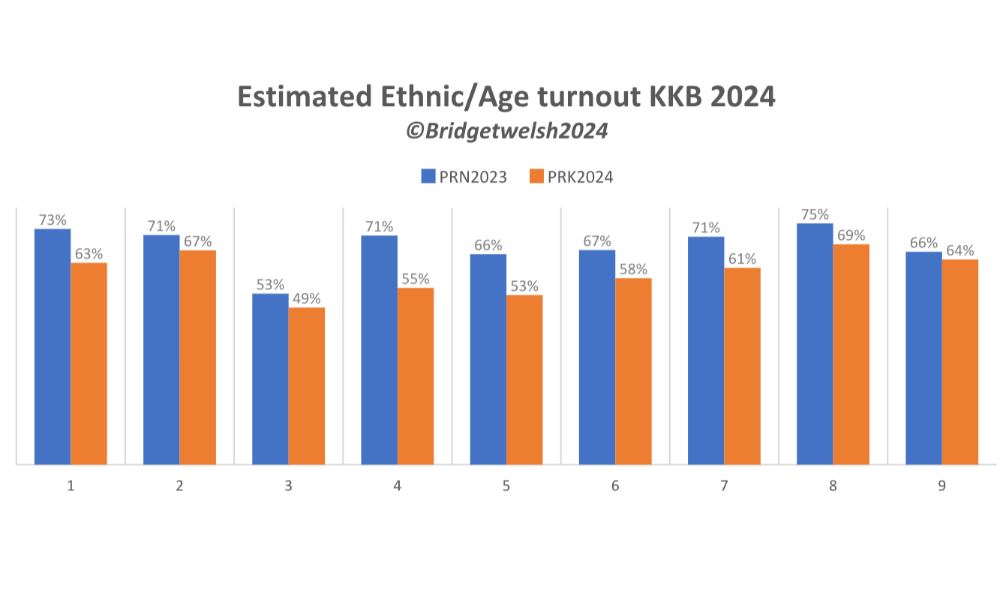
What the turnout findings also show is that Harapan was comparatively better at turning out its traditional core supporters, with only an estimated seven percent drop in their vote base.
PN lacked oiled machinery and was internally divided in the campaign, and experienced considerably lower turnout among its base, an estimated drop of 15 percent.
This can be seen to be a product of the campaign, with fewer resources and cooperation. It also can be seen as less loyalty to Bersatu compared to the past, as Muhyiddin Yassin’s appeal was noticeably weaker this campaign compared to recent earlier elections.
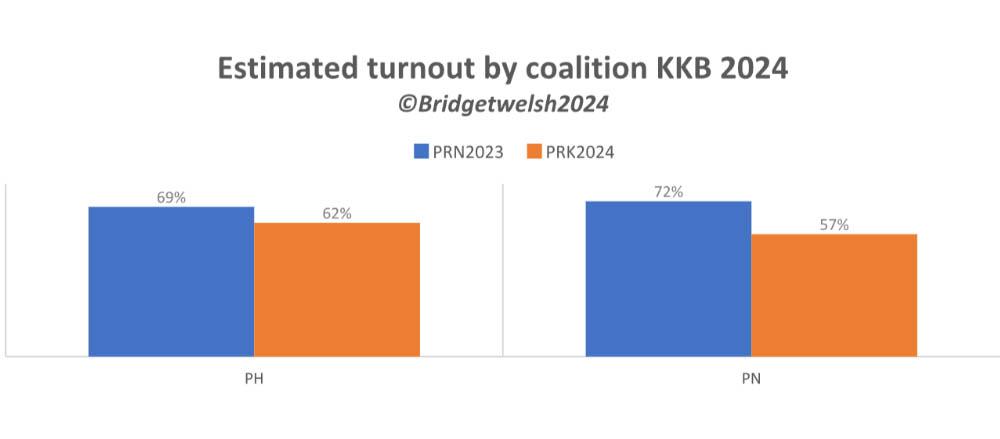
Both sides should see the turnout drop as a wake-up call in voter engagement. As an incumbent, Harapan was better able to hone its electoral advantage in the by-election, as BN did in the past.
Deepening ethnic polarisation with multiple swings
The ethnic voting findings in Kuala Kubu Baharu point to a deepening ethnic polarisation, with PN winning more Malay support and Harapan increasingly dependent on non-Malay support.
Campaigns tied to racialised appeals are having a corrosive divisive impact, with neither coalition able to substantively cross the ethnic divide.
In an earlier piece, I argued that for PN to win, there would need to be at least two significant swings in voting in their favour. This did not happen. Both sides experienced ethnic swings in their favour.
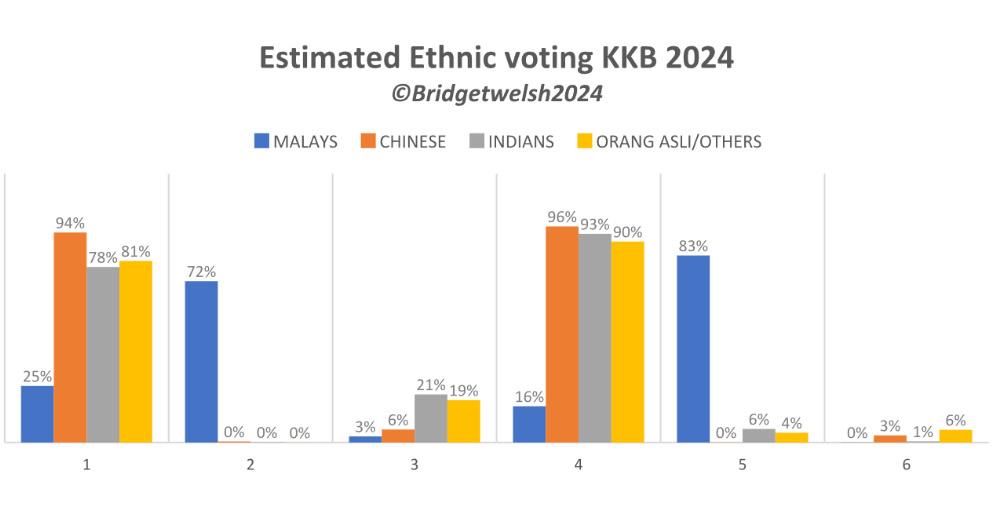
PN won a larger share of the Malay vote, an estimated gain of nine percent. Keep in mind this is among fewer Malay voters that turned out.
Harapan on its part won greater support among Chinese voters (a modest estimated two percent) and Indian and Orang Asli voters (estimated 93 and 90 percent with estimated gains of 15 percent and nine percent, respectively).
Harapan won support in part by picking up support that had gone to independents/Muda in the state polls of 2023. PN also made very modest inroads among Orang Asli and Indian voters, winning an estimated six percent and four percent, respectively.
As I argued in an earlier piece, these were the contested communities, a battle that Harapan won overwhelmingly but not completely.

The reason Harapan won lies in what I have argued earlier, an incumbent resource advantage. By looking at class voting dynamics, estimated based on income areas in different parts of Kuala Kubu Baharu, it is clear that Harapan gained especially in areas with lower socio-economic conditions.
As now the government of the day, this provided Harapan with a long BN electoral advantage, especially concentrated in a by-election.
It is important to note that the state constituency has lower incomes and higher income inequality compared to the overall Hulu Selangor parliamentary constituency, according to data from the Department of Statistics Malaysia. It speaks to the neglect of this constituency and the need for continued attention to local concerns after the by-election.
Gains by Indians and Orang Asli were tied to by-election campaign calls for greater support to address the vulnerabilities of these communities. These voters have given the unity coalition government a chance, one that should not be squandered.
Youth power
The age cohort estimates show that Harapan should be concerned with its persistent youth deficit. PN leaders are correct in highlighting their estimated 10 percent gain among youth, voters under 30. This was concentrated among Malay younger voters.
Some of the PN gain was picked up from Muda support in the last state polls. Harapan, however, did gain modestly among voters in their 30s, by an estimated five percent. PN on its part made modest gains among voters above 40 as well. Here the movement of support from the independent/Muda from the previous state polls is evident.
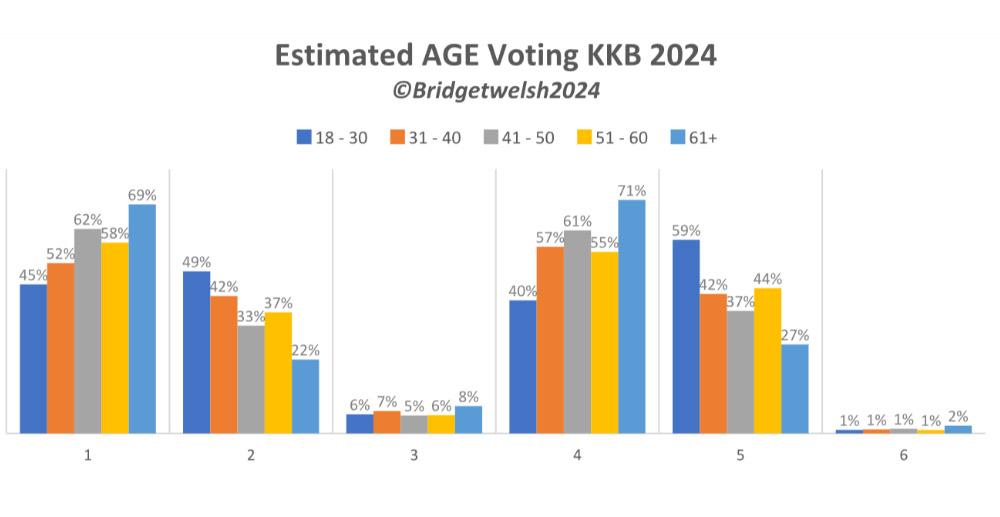
PN’s youth gains speak to a dynamic where it remains highly competitive electorally, as demographic trends work in its favour. PN remains hampered by its lack of appeal across communities.
Harapan on its part continues to ignore calls for a substantive youth policy that addresses the needs of younger voters. Higher costs of living and taxes especially hit this group hard as wages and opportunities have not significantly improved. Harapan’s youth weakness is real.
A damaging victory?
For DAP/Harapan, a win is a win. Yet the voting analysis suggests that there should be little to crow about. The ethnic electoral divide has widened, making the challenge of building unity and moving toward non-racialised ethnic narratives more difficult.
Voters are increasingly disengaged. Unhappiness was evident in a campaign focused on race and negative sentiments. This is not a winning dynamic; it highlights that the status quo of ethnic electoral polarisation is harder to move away from.
Harapan continues to lose support among Malays despite the Anwar Ibrahim government’s myopic focus on this community - an approach that is not working. While Harapan continues to hold onto its non-Malay base, it did so by being the in-government alternative.

While DAP’s appeal among non-Malays remains strong, its advantage was boosted by the still-alive hope that being in power will deliver results. These results have yet to be delivered, especially for vulnerable minority communities. As one voter described, they are still waiting for the roads to be properly paved.
For PN, the gains among Malays and youth point to persistent strength electorally yet with real weakness. The very modest support gains among non-Malays are a new trend, but fall far short of making them electorally viable nationally in multi-ethnic constituencies such as Kuala Kubu Baharu. The turnout drop among PN core supporters should also be of concern, especially for Bersatu.
Both sides should see the result as an opportunity to learn and address deficits in voter engagement and support. Sadly, it is likely that this is a lesson they will not learn, which may arguably be the most damaging outcome of the by-election. - Mkini
BRIDGET WELSH is an honourary research associate of the University of Nottingham’s Asia Research Institute, a senior research associate at Hu Fu Center for East Asia Democratic Studies, and a senior associate fellow at The Habibie Centre. Her writings can be found at bridgetwelsh.com.
The views expressed here are those of the author/contributor and do not necessarily represent the views of MMKtT.




No comments:
Post a Comment
Note: Only a member of this blog may post a comment.